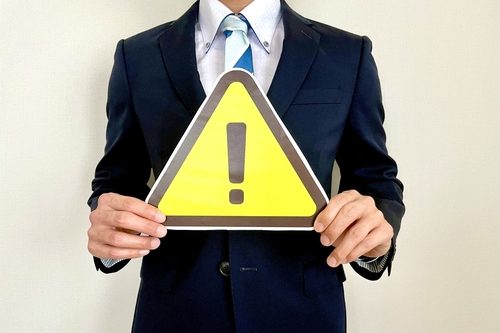MUSUBI: Disaster Prevention in Japan

Being prepared for disasters in Japan in very important. Although major earthquakes and typhoons are not that common, when they do strike they can cause massive disruptions to local services such and transit and grocery stores. We should do our best to be prepared in case of a disaster. There are several very easy ways to stay prepared all year round, not just during typhoon season.
Weathering the Storm
Disasters are often not extreme enough to force us from our homes, so the majority of preparations you can make will be to your home. Preparing for a typhoon is the most straight forward.
Many homes and apartments are equipped with metal shutters to protect the windows from flying debris during high wind conditions such as gales and typhoons. They are very effective but are most common on houses, but much less so on apartments. These metal shutters are often stored in a box like container to one side of the sliding doors. Be very careful when removing them from the container. Many types of bugs including wasps and spiders enjoy living in there, so be prepared for company if you don't routinely clean them out.
Many people tape their windows with the hope of preventing them from breaking during the high winds. According to experts, this is a very bad idea. If a window were to shatter in a storm, it would break into many pieces that would be too small to do serious harm to a person. If you tape the same window it will preserve large chunks of sharp glass to be thrown about the room potentially causing severe injury. However, do keep your curtains closed in case that the window is broken to prevent injuries.
Many homes and apartments are equipped with metal shutters to protect the windows from flying debris during high wind conditions such as gales and typhoons. They are very effective but are most common on houses, but much less so on apartments. These metal shutters are often stored in a box like container to one side of the sliding doors. Be very careful when removing them from the container. Many types of bugs including wasps and spiders enjoy living in there, so be prepared for company if you don't routinely clean them out.
Many people tape their windows with the hope of preventing them from breaking during the high winds. According to experts, this is a very bad idea. If a window were to shatter in a storm, it would break into many pieces that would be too small to do serious harm to a person. If you tape the same window it will preserve large chunks of sharp glass to be thrown about the room potentially causing severe injury. However, do keep your curtains closed in case that the window is broken to prevent injuries.
The Essentials: Food & Water
Food and water are some of the things that become scarce immediately following a disaster. I recommend staying well-supplied with curry and rice. Both the curry and rice can be purchased in a boil-in bag type. This is important because if the power is out and the city gas is not working, you may have to make it yourself the old-fashioned way. Every Daiso in Japan carries everything you need to survive for a few days in the event of a disaster.
A must-have is a single burner butane stove and a pot. Daiso will not carry the burner itself, but the butane gas canisters will be there as well as plates and pots you can use to cook. They even have curry there! I keep a stock in my house of bottled water and curry that can last for a week if necessary.
Keeping a week's worth of water in your house for drinking and eating is a little bit impractical. That would be more than 20 liters of water per person at the minimum. Getting large bottle that you can carry is very important. You can see many people using large empty Sochu bottles to collect purified water at the grocery store. I would highly recommend a similar approach. They are rugged and have a nice handle to carry them with as well.
Schools and city buildings are typically designated disaster areas. If something happens to your water supply at home you should be able to use those bottles to go collect drinking water and curry making water at a school or government office.
A must-have is a single burner butane stove and a pot. Daiso will not carry the burner itself, but the butane gas canisters will be there as well as plates and pots you can use to cook. They even have curry there! I keep a stock in my house of bottled water and curry that can last for a week if necessary.
Keeping a week's worth of water in your house for drinking and eating is a little bit impractical. That would be more than 20 liters of water per person at the minimum. Getting large bottle that you can carry is very important. You can see many people using large empty Sochu bottles to collect purified water at the grocery store. I would highly recommend a similar approach. They are rugged and have a nice handle to carry them with as well.
Schools and city buildings are typically designated disaster areas. If something happens to your water supply at home you should be able to use those bottles to go collect drinking water and curry making water at a school or government office.
Conclusion
I hope that these easy tips can help you stay safe and happy if the unthinkable happens. Japan is generally a very safe place but not perfectly safe. Let's take a few small steps to take care of ourselves if something unthinkable happens.
Photo Credits
Main Image: 青ハイビスカス
All other content (text) created by the original author and © 2024 MUSUBI by Borderlink
Photo Credits
Main Image: 青ハイビスカス
All other content (text) created by the original author and © 2024 MUSUBI by Borderlink
WRITER

Kevin Helms
From the USA
Has experienced Japan for 8 years
RECOMMENDED
-

Kona’s Coffee - A Hawaiian Paradise in Himeji
If there’s one thing I’ve learned while being here in Japan, it’s that everyone loves Haw... -

3 Must-Know Social Faux Pas in Japan
There are various social faux pas in Japan that everyone, particularly those new to the country, should be awa... -

Slim Wallet Fitness
Exercise in Japan is expensive. There isn’t a lot of land space, so spacious gyms with many machines com...



